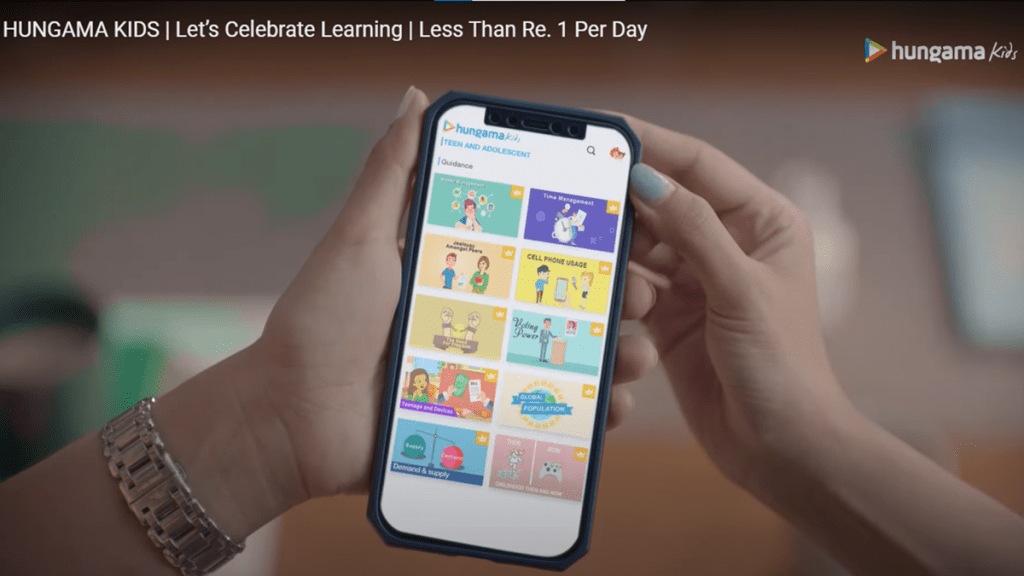As kids’ access to mobile devices rises steeply, OTT platforms like Voot Kids, Hungama Kids and others are upping their game. The onset of the pandemic in 2020 pushed parents to equip their children with smartphones for educational purposes. Around 67.6% of the children enrolled in government and private schools have access to smartphones now, as compared to 36.5% in 2018 (source: Annual Status of Education Report 2021).
Voot Kids from Viacom18 and Hungama Kids from Hungama Digital Media came into existence in 2019. Toonz Media Group ventured into this nascent space in February, 2021, while DIY.org is the most recent entrant with DIY TV, an SVoD platform for children. Will these platforms be able to attract a sizable user base?
Safe space
There is no dearth of content for children on digital platforms. YouTube hosts thousands of hours of content meant for children through the channels of broadcasters, content publishers, etc. So why launch platforms exclusively for children? Ferzad Palia, senior EVP and head – SVoD & international business, Viacom18, says that such OTT platforms are addressing one key requirement: that of a content platform where children can browse freely. “Parents can hand over the device to their children and be confident that the child won’t stray into content that’s unsafe for them,” he says.
Other than hosting a kid-safe environment, these platforms are also aiming to become a ‘wholesome destination’ for children. Voot Kids hosts videos, audio content, and textual content in the form of books to keep children engaged and entertained. “At present about 70-75% of the time spent on Voot Kids is on video content. As we acquire more non-video content, we expect children to spend about 40% of their time reading books and listening to audio content,” Palia adds.
DIY TV uploads content that encourages children to perform an activity or task by themselves offline and share it with the DIY TV community online. “A 10-minute video on our platform can translate into 30 minutes of offline activity time for a child,” says Bhavik Rathod, co-founder DIY.org. This OTT platform has introduced a social media layer to allow children to share their projects with each other online, and seek guidance from the platform’s experts.
Attracting users
The widespread adoption of edtech solutions by school children has not necessarily translated into increased consumption of kids’ specific entertainment platforms. “TV and YouTube still seem to be the main media through which kids are consuming content. The pandemic should have resulted in a huge jump in usage of kids’ OTT platforms, but the uptake has been slow,” says Soumini Sridhara Paul, senior vice president, Hungama Digital Media Entertainment.
Voot Kids and Hungama Kids offer yearly subscriptions at Rs 299 per year. Voot Kids has recently introduced a free version of its service that is not yet subsidised by advertising. Hungama Kids is planning to introduce a TVoD segment, in addition to the existing SVoD channel, for specific shows that will be acquired from third-party vendors. Palia says 70% of the app’s users are paying subscribers. DIY TV, which charges $7.99 per month or $79.99 per year, gets most of its users from the US, Canada, the UK and Australia.
Saurabh Uboweja, founder and managing partner, BOD Consulting, says pricing is key in this segment, “as purchasing a subscription is akin to gifting a toy to a child, unlike investing in edtech subscription which is a planned expenditure to supplement the child’s education”.
Broadcasters point out that children seek comfort in re-watching their favourite movies and shows which reduces pressure on generating fresh content. But analysts say that platforms will need to add fresh tentpole shows if they wish to drive usage. Nitin Menon, co-founder and managing partner, NV Capital, says, “New IPs will change the dynamics of kids’ OTT platforms. But as things stand right now, none of the shows or movies that have been launched on OTT platforms have become popular.”
Bundling multiple services has benefitted video streaming platforms in customer acquisition. Menon suggests a similar model for these platforms. “The market is nascent; the likelihood of parents subscribing to a platform that hosts content exclusively for children is low,” he notes.
Read Also: How fantasy gaming industry will perform in 2022

